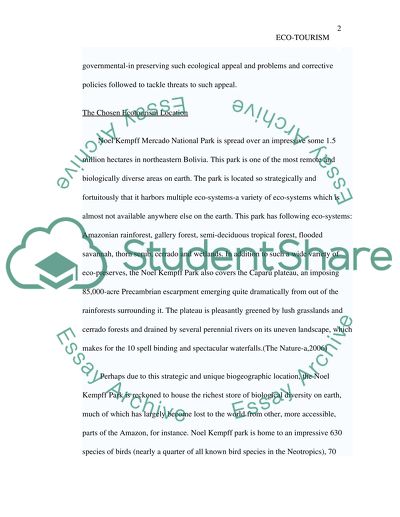Cite this document
(Principles of Ecotourism Case Study Example | Topics and Well Written Essays - 1750 words, n.d.)
Principles of Ecotourism Case Study Example | Topics and Well Written Essays - 1750 words. https://studentshare.org/tourism/1529519-principles-of-ecotourism
Principles of Ecotourism Case Study Example | Topics and Well Written Essays - 1750 words. https://studentshare.org/tourism/1529519-principles-of-ecotourism
(Principles of Ecotourism Case Study Example | Topics and Well Written Essays - 1750 Words)
Principles of Ecotourism Case Study Example | Topics and Well Written Essays - 1750 Words. https://studentshare.org/tourism/1529519-principles-of-ecotourism.
Principles of Ecotourism Case Study Example | Topics and Well Written Essays - 1750 Words. https://studentshare.org/tourism/1529519-principles-of-ecotourism.
“Principles of Ecotourism Case Study Example | Topics and Well Written Essays - 1750 Words”. https://studentshare.org/tourism/1529519-principles-of-ecotourism.


